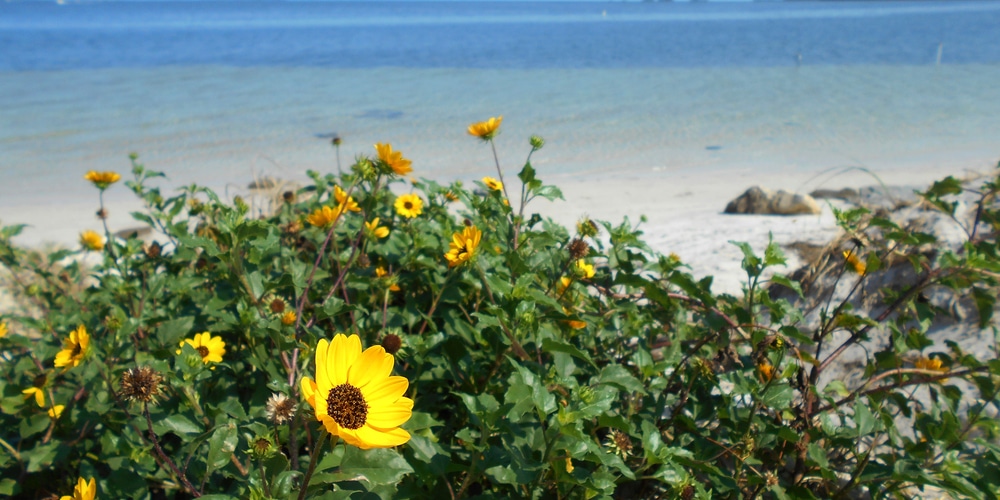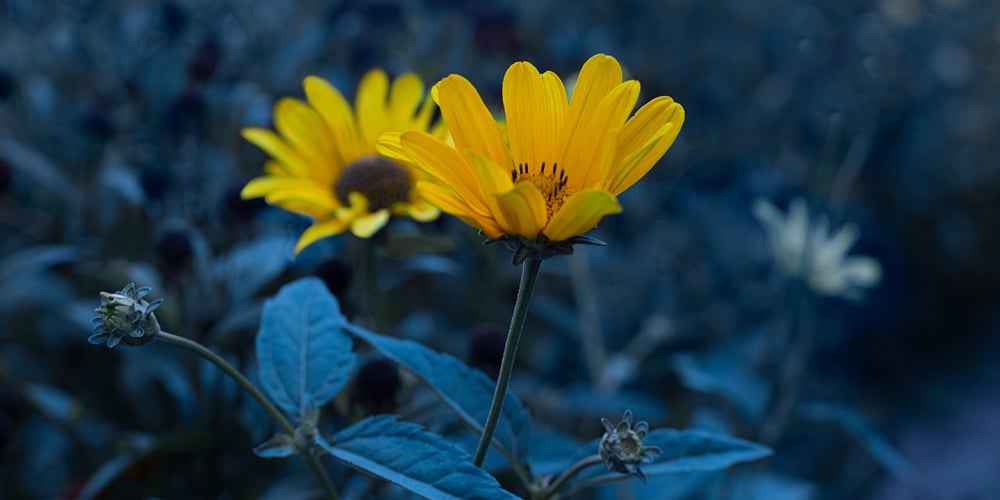Dune sunflowers are a beautiful, cheerful addition to any yard. They are low maintenance and easy to grow, producing many small flower heads that last throughout the summer and fall.
These flowers naturally grow in coastal areas and like sandy soils. In warmer regions such as Florida, these plants flower year-round. Let’s look at how to grow and care for a dune sunflower.
What is a dune sunflower?
Dune sunflowers aren’t really a sunflower as they are part of the daisy family and have much smaller flowers. They are bred for their tolerance to drought and poor soil, making them an ideal choice for gardeners in dry climates. Dune sunflowers grow well in coastal areas as they can tolerate sandy soils, salt, and strong winds. They are also relatively low-maintenance, making them great for novice gardeners.
Dune sunflowers have the botanical name Helianthus Debilis. They are also commonly referred to as cucumber leaf sunflower, weak sunflower, East Coast dune sunflower, or beach sunflower. They are part of the Asteraceae family which includes daisies and Aster.
Dune sunflowers are popular for gardeners in hot climates looking for tough plants with great looks and few pest problems. Depending on the growing conditions, dune sunflowers grow between 1 and 2 feet tall and can spread up to 5 feet wide. They have dense foliage, which provides shade for other smaller plants. The plant also provides ground cover for small animals.
The flowers of dune sunflowers are a cheerful yellow and open in the spring or early summer, depending on the climate. These plants grow well in warmer areas where they produce flowers year-round. They are a good plant to grow if you live in USDA zones 8A to 11. These plants are pollinated by bees and other insects, and birds eat the seeds. The plants provide excellent habitat for beneficial insects and are resistant to most insect pests.
Dune Sunflower Growth and Care
Dune sunflowers can be grown from seed or transplanted from a nursery. Dune sunflowers can be grown in containers but should be spaced 2 to 3 feet apart since they will grow quite large. These plants prefer full sun and well-drained soils but can tolerate some light shade and drought. They can be planted in spring or fall, but fall is the best time to plant them in areas with mild winters. Here are some tips to help you grow a thriving dune sunflower plant:
Watering and fertilization
Dune sunflowers can be fertilized with a general garden fertilizer but do not require much supplemental feeding. They should be watered regularly, especially during the first year after planting, but can tolerate periods of drought.
Pruning
Dune sunflowers don’t require much pruning but can be cut back to the desired size and shape. Deadheading (removing the spent flowers) is beneficial and will encourage more blooms.
Conclusion
Dune sunflowers are an excellent choice for gardeners in dry climates. They are tolerant of drought and poor soil and are relatively low-maintenance. The flowers are cheerful yellow and can grow throughout the year.
The flowers are pollinated by bees and other insects, and the seeds are eaten by birds. The plants provide excellent habitat for beneficial insects and other wildlife.

